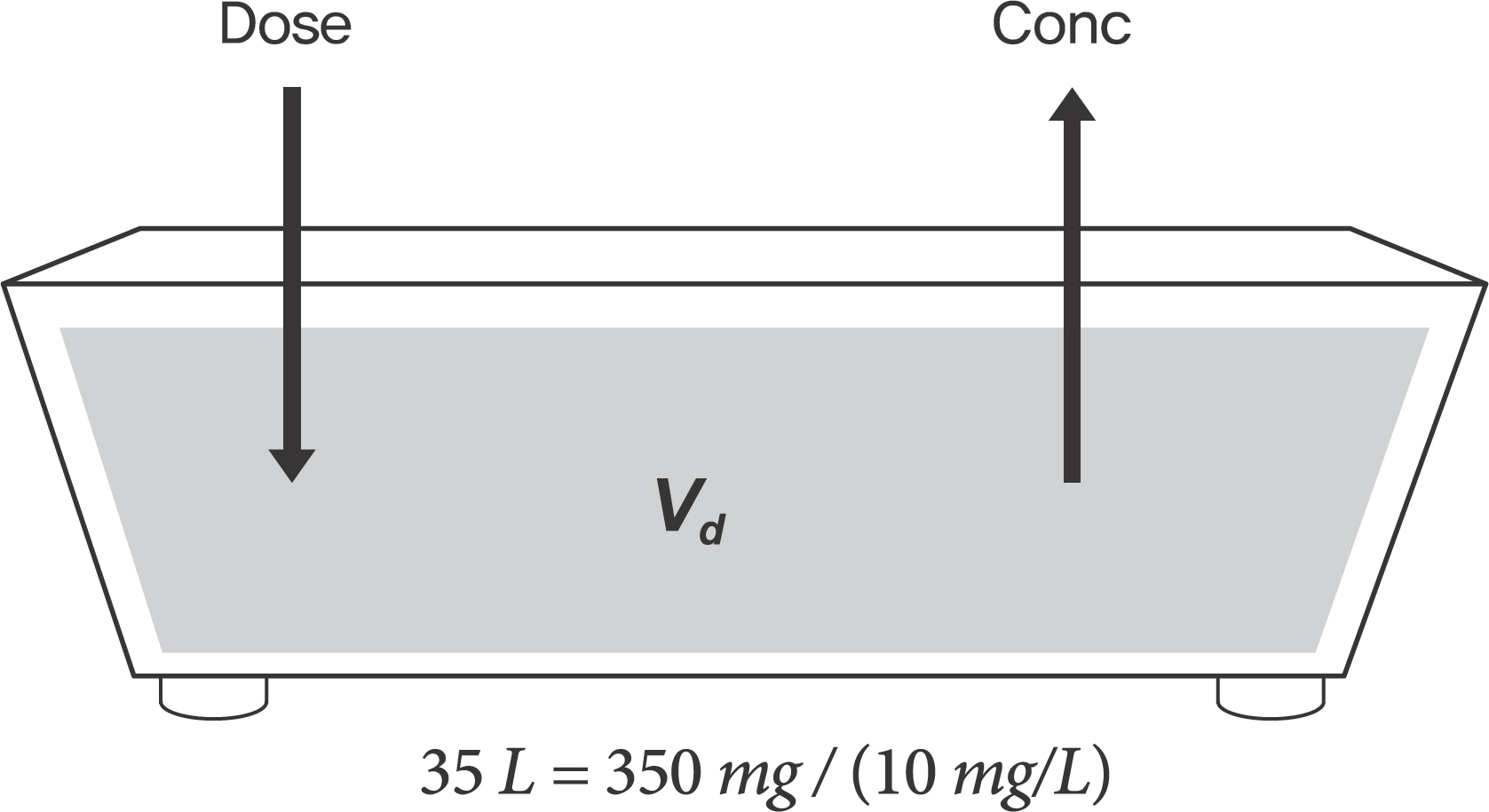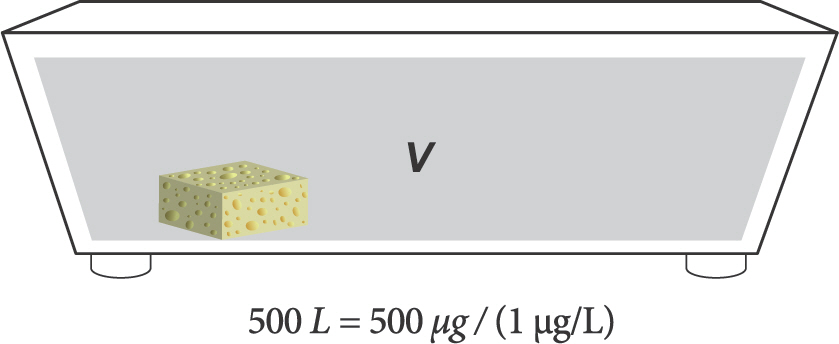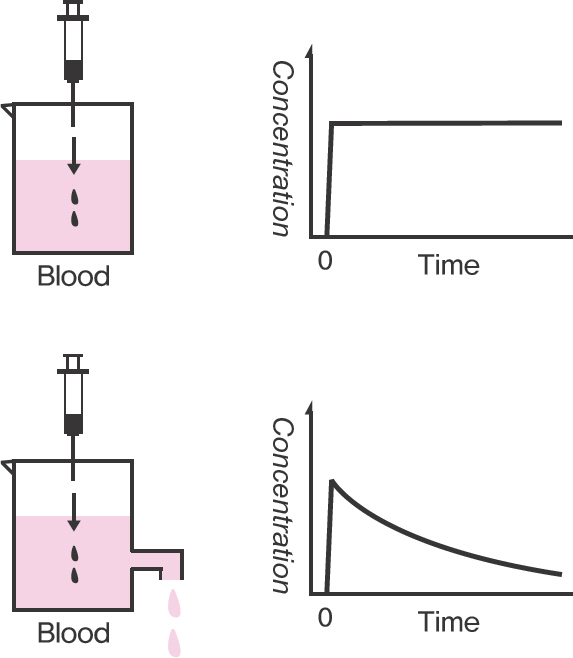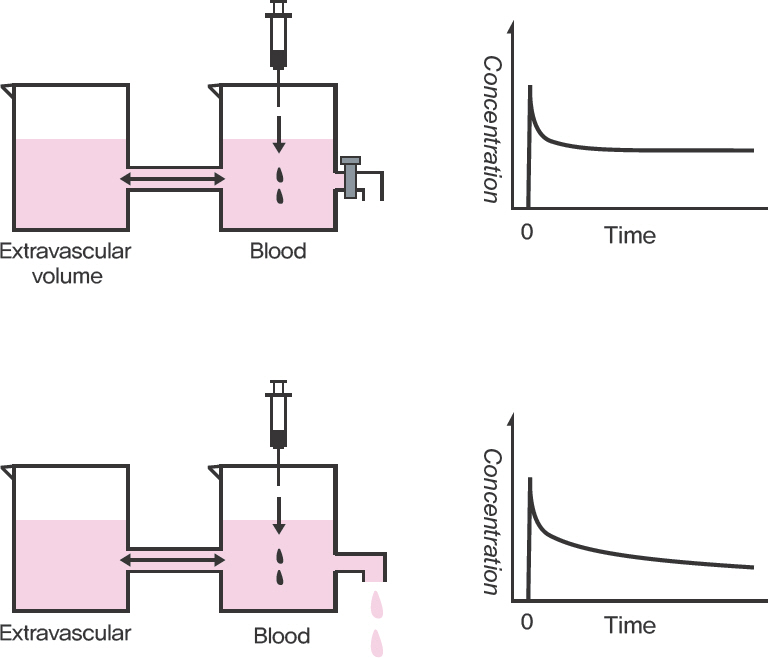Transl Clin Pharmacol.
2016 Jun;24(2):74-77. 10.12793/tcp.2016.24.2.74.
Volume of Distribution
- Affiliations
-
- 1Department of Pharmacology & Clinical Pharmacology, University of Auckland, Auckland, New Zealand. n.holford@auckland.ac.nz
- 2Department of Clinical Pharmacology and Therapeutics, Seoul St. Mary's Hospital, College of Medicine, The Catholic University of Korea, Seoul 06591, Korea.
- 3PIPET (Pharmacometrics Institute for Practical Education and Training), College of Medicine, The Catholic University of Korea, Seoul 06591, Korea.
- KMID: 2290472
- DOI: http://doi.org/10.12793/tcp.2016.24.2.74
Abstract
- This tutorial deals with basic concepts of volume of distribution, the second most important parameter in pharmacokinetics but often challenging for students in clinical pharmacology. Its relationships with dose, concentration and amount in the body are discussed using a physical model and examples of commonly used drugs, as well as its physiological aspects pertaining to the physical volume of differing organs. Finally, application of volume of distribution to the calculation of loading dose and half-life is used to show how it is essential in pharmacotherapy and clinical pharmacology.
Keyword
Figure
Cited by 2 articles
-
Pharmacodynamic principles and target concentration intervention
Nick Holford
Transl Clin Pharmacol. 2018;26(4):150-154. doi: 10.12793/tcp.2018.26.4.150.Treatment response and disease progression
Nick Holford
Transl Clin Pharmacol. 2019;27(4):123-126. doi: 10.12793/tcp.2019.27.4.123.
Reference
-
References
1. Holford N, Black P, Couch R, Kennedy J, Briant R. Theophylline target concentration in severe airways obstruction – 10 or 20 mg/L? A randomised concentration-controlled trial. Clin Pharmacokinet. 1993; 25:495–505.2. Watson PE, Watson ID, Batt RD. Total body water volumes for adult males and females estimated from simple anthropometric measurements. Am J Clin Nutr. 1980; 33:27–39.
Article3. Chumlea WC, Guo SS, Zeller CM, Reo NV, Baumgartner RN, Garry PJ, et al. Total body water reference values and prediction equations for adults. Kidney Int. 2001; 59:2250–2258.
Article4. Fallacy. Red Herring. http://www.nizkor.org/features/fallacies/red-herring.html.[serialontheInternet].AccessedApril10. 2016.5. Slattery JT, Levy G, Jain A, McMahon FG. Effect of naproxen on the kinetics of elimination and anticoagulant activity of a single dose of warfarin. Clin Pharmacol Ther. 1979; 25:51–60.
Article6. Jain A, McMahon FG, Slattery JT, Levy G. Effect of naproxen on the steady-state serum concentration and anticoagulant activity of warfarin. Clin Pharmacol Ther. 1979; 25:61–66.
Article
- Full Text Links
- Actions
-
Cited
- CITED
-
- Close
- Share
- Similar articles
-
- The normal values of platelet count, mean platelet volume and platelet distribution width in the normal newborn, small for gestational age and premature neonates
- The Influence of Volume Effect in 2D-array Ion Chamber on the Measurement of IMRT Dose Distribution
- Interpretation of volume kinetics in terms of pharmacokinetic principles
- Thyroid Volume Measured by (99m)Tc-Pertechnetate Scintigraphy and Its Relationship with Clinical Parameters in Korean Patients with Autoimmune Thyroiditis
- Coulter counter analysis of urinary red blood cell for diagnostic evaluation of hematuria







